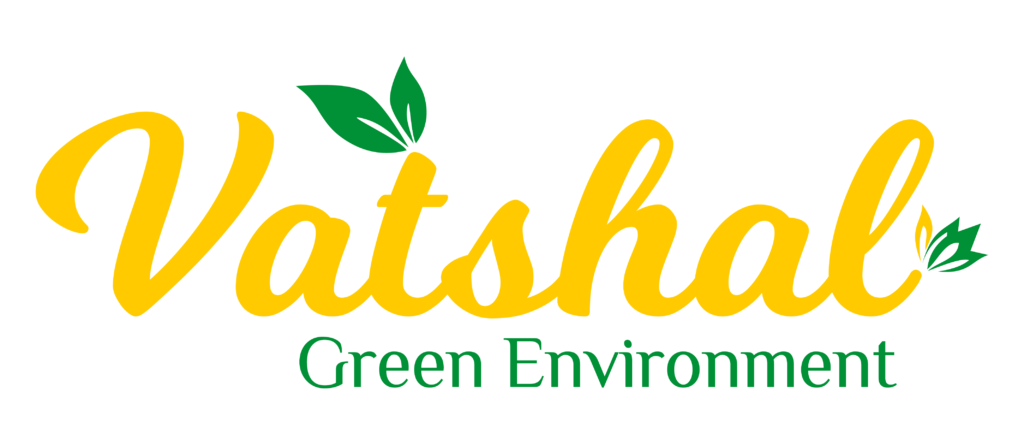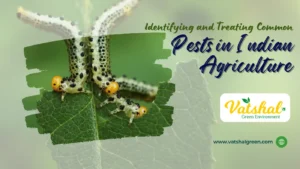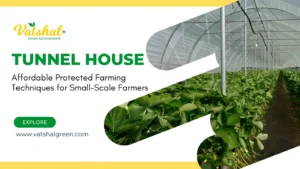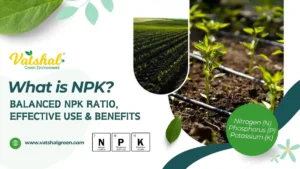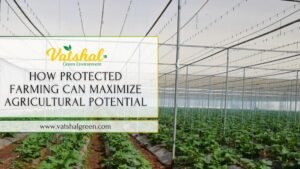n recent years, the agricultural landscape has witnessed a remarkable transformation with the advent of protected farming. This innovative approach to cultivation offers numerous benefits, revolutionizing traditional farming methods and enabling growers to overcome various challenges. In this article, we delve into the concept of protected farming, its significance in modern agriculture, and the advantages it brings to farmers worldwide.
What is Protected Farming?
Protected farming, alternatively labeled as protected cultivation or controlled environment agriculture, revolves around the strategic implementation of structures to curate an environment conducive to optimal plant growth. These structures serve as guardians against external adversities, encapsulating a realm where growers wield control over crucial variables influencing cultivation. These structures, which can range from simple polyethylene tunnels to sophisticated greenhouses, shield crops from adverse weather conditions, pests, and diseases while optimizing growing conditions.
Advantages of Protected Farming
Enhanced Crop Quality and Yield: By providing a controlled environment, protected farming allows growers to optimize growing conditions such as temperature, humidity, and light intensity. This results in improved crop quality, higher yields, and consistent production throughout the year.
Year-Round Cultivation: Unlike traditional open-field farming, protected cultivation enables year-round production regardless of external weather conditions. This continuity in cultivation ensures a steady supply of fresh produce, reducing dependency on seasonal cycles.
Pest and Disease Management: The protective structures act as a barrier against pests and diseases, minimizing the need for chemical pesticides and reducing crop losses. Integrated pest management (IPM) techniques can be effectively implemented in protected farming systems, promoting ecological balance.
Water Conservation: Controlled irrigation systems integrated into protected farming structures help optimize water usage by delivering precise amounts of water directly to the root zone. This efficient water management reduces wastage and promotes sustainable farming practices.
Optimized Resource Utilization: Protected farming allows growers to make efficient use of limited resources such as land, water, and energy. Vertical farming techniques, for instance, maximize space utilization by growing crops in stacked layers, making it suitable for urban agriculture.
Types of Protected Farming Structures
Polyethylene Tunnels: These cost-effective structures consist of a metal frame covered with UV-stabilized polyethylene plastic. Polyethylene tunnels provide protection from weather extremes and pests while allowing natural ventilation.
Greenhouses: Greenhouses are enclosed structures typically made of glass or transparent plastic, providing controlled environments for plant growth. Advanced greenhouse systems may incorporate automated climate control, irrigation, and fertigation systems for precise management.
High Tunnels: Also known as hoop houses, high tunnels are similar to greenhouses but are less expensive and simpler in design. These structures offer season extension capabilities and are widely used for growing a variety of crops.
Vertical Farms: Vertical farming involves cultivating crops in vertically stacked layers or inclined surfaces, often within urban environments. This innovative approach maximizes space utilization and allows for year-round production in densely populated areas.
The Future of Agriculture: Innovations in Protected Farming
Smart Farming Technologies: The integration of Internet of Things (IoT) devices, sensors, and data analytics enables precision farming in protected cultivation. Growers can remotely monitor and control environmental factors such as temperature, humidity, and soil moisture, optimizing crop growth and resource utilization.
Hydroponics and Aeroponics: Hydroponic and aeroponic systems, which involve growing plants without soil using nutrient-rich solutions or mist environments, are gaining popularity in protected farming. These soilless cultivation methods offer advantages such as faster growth rates, higher yields, and reduced water consumption.
Climate-Resilient Agriculture: With climate change posing significant challenges to traditional farming practices, protected farming offers a solution for climate-resilient agriculture. By mitigating the impact of extreme weather events and temperature fluctuations, protected cultivation helps ensure food security and sustainability in the face of changing climatic conditions.
In conclusion, protected farming represents a paradigm shift in agriculture, offering sustainable solutions to enhance productivity, mitigate risks, and conserve resources. As the global population continues to grow, the adoption of protected cultivation techniques will play a crucial role in meeting the rising demand for food while minimizing environmental impacts. By embracing innovation and leveraging technology, farmers can unlock the full potential of protected farming to create a more resilient and productive agricultural sector.
